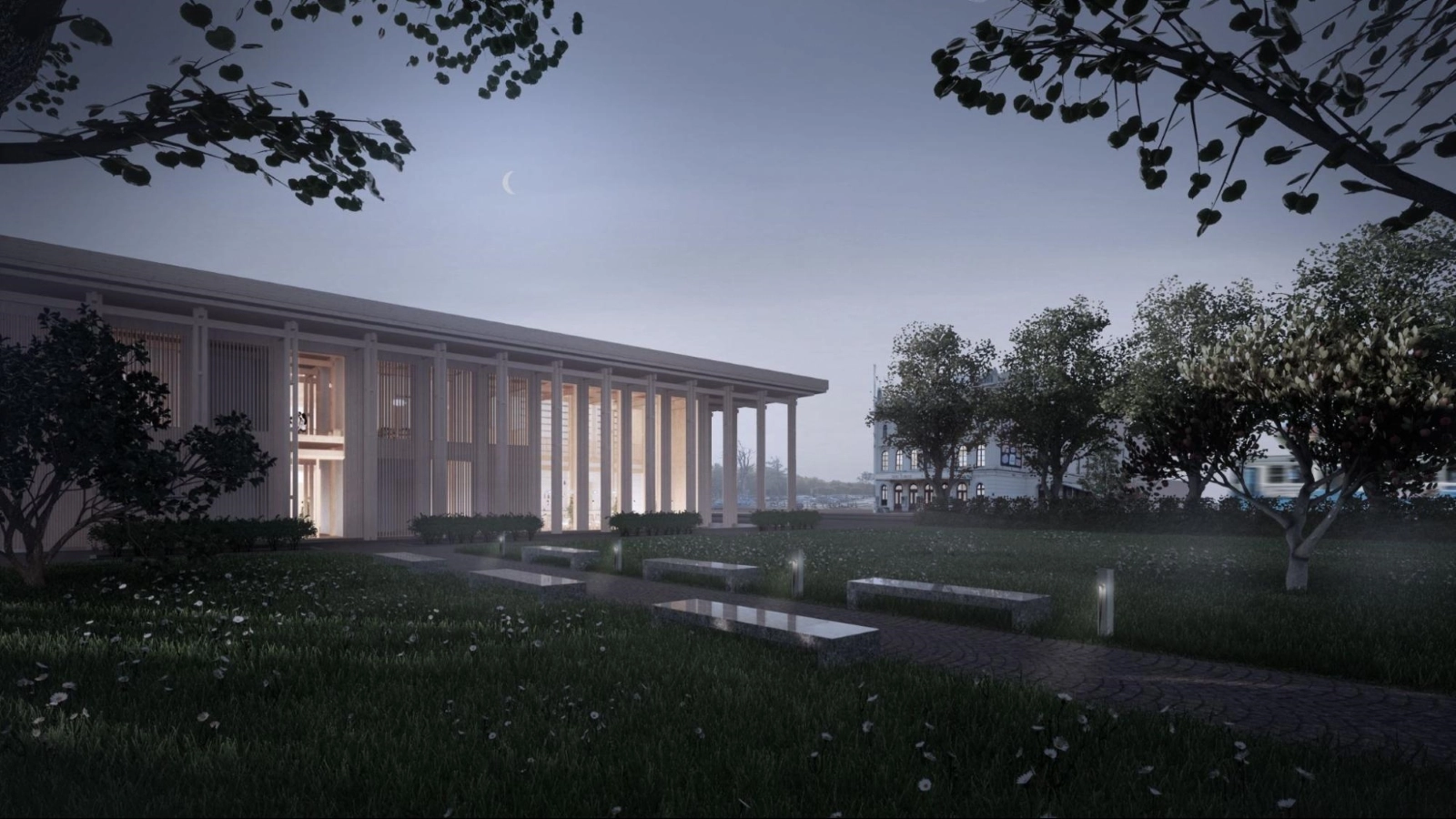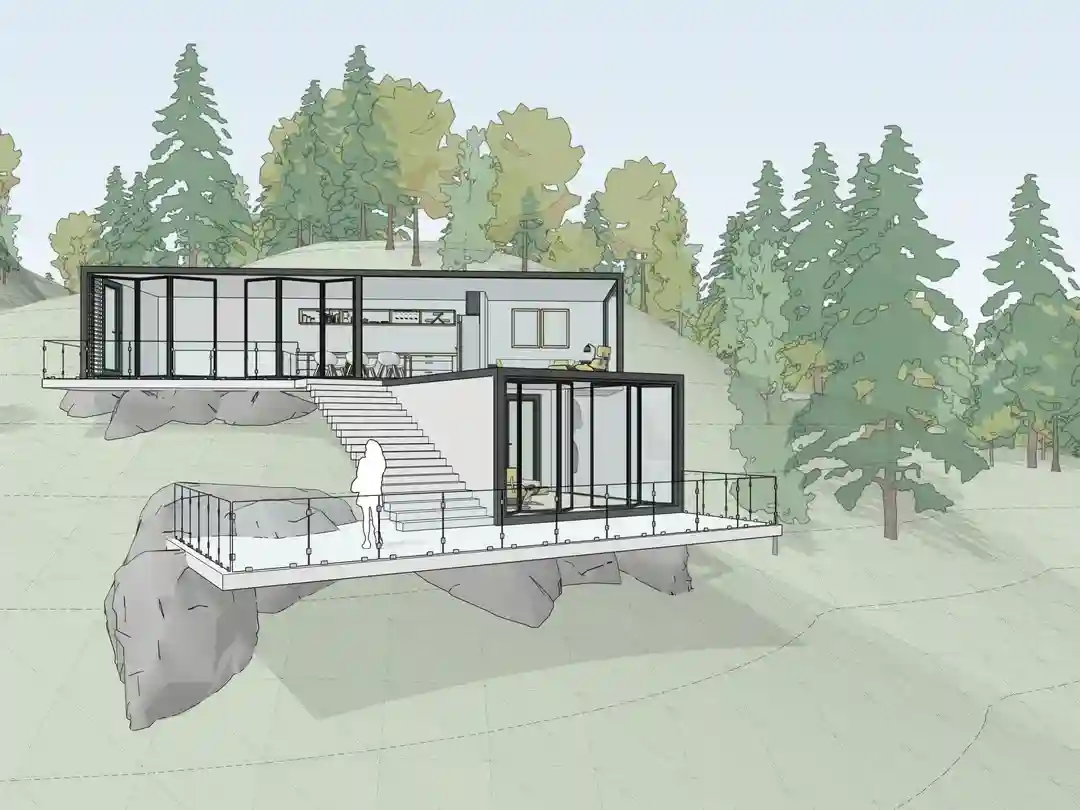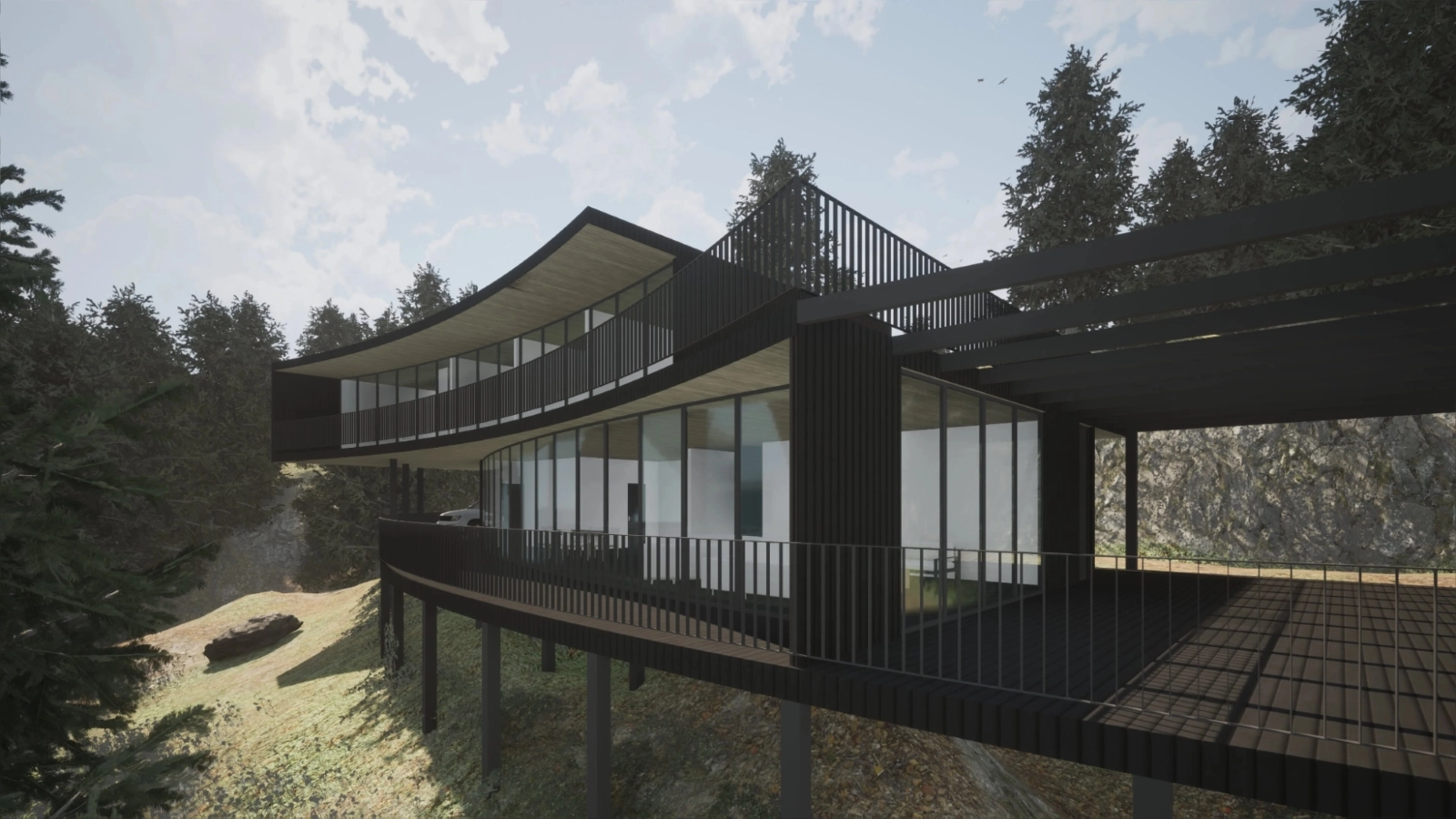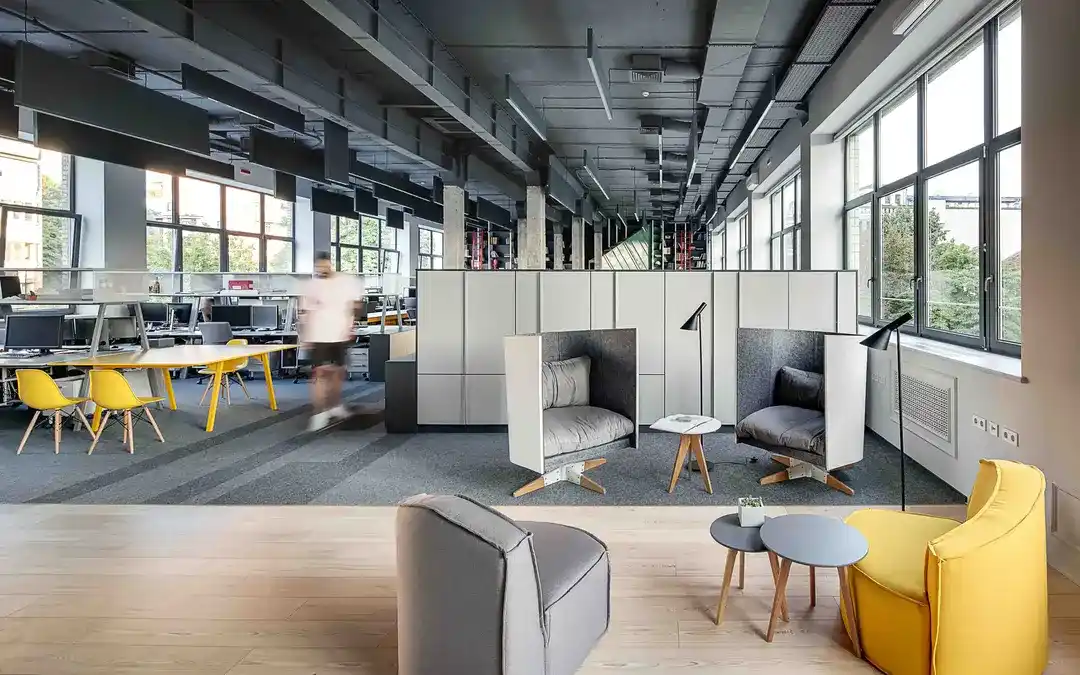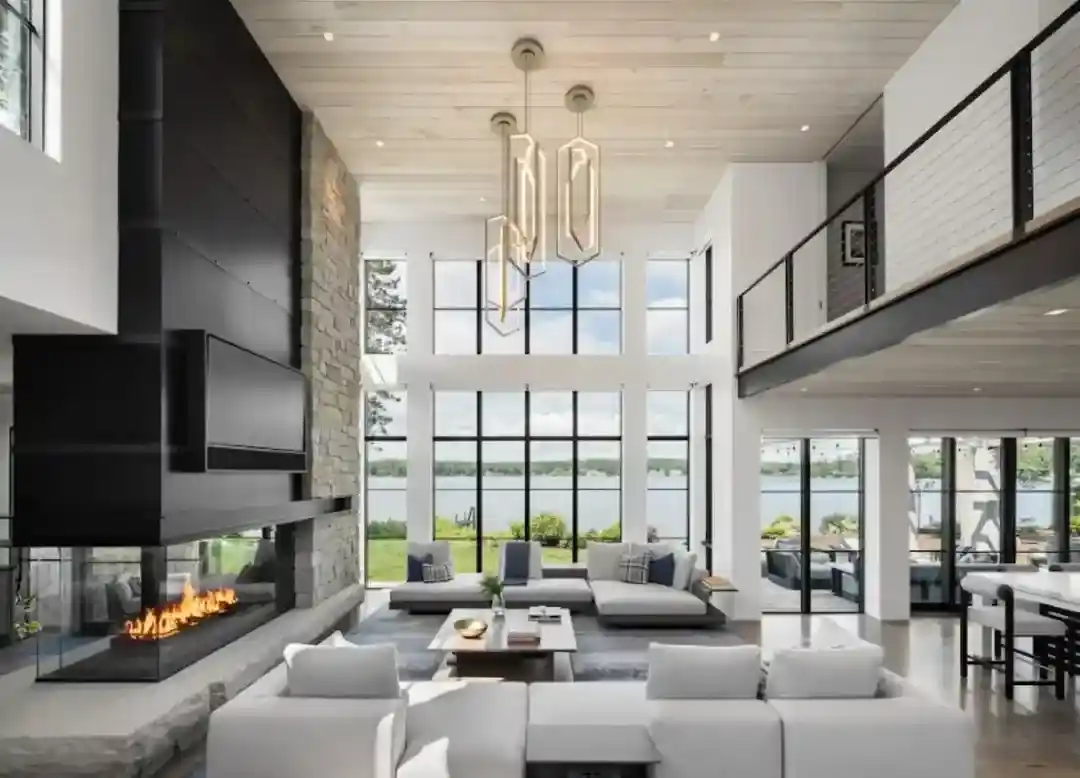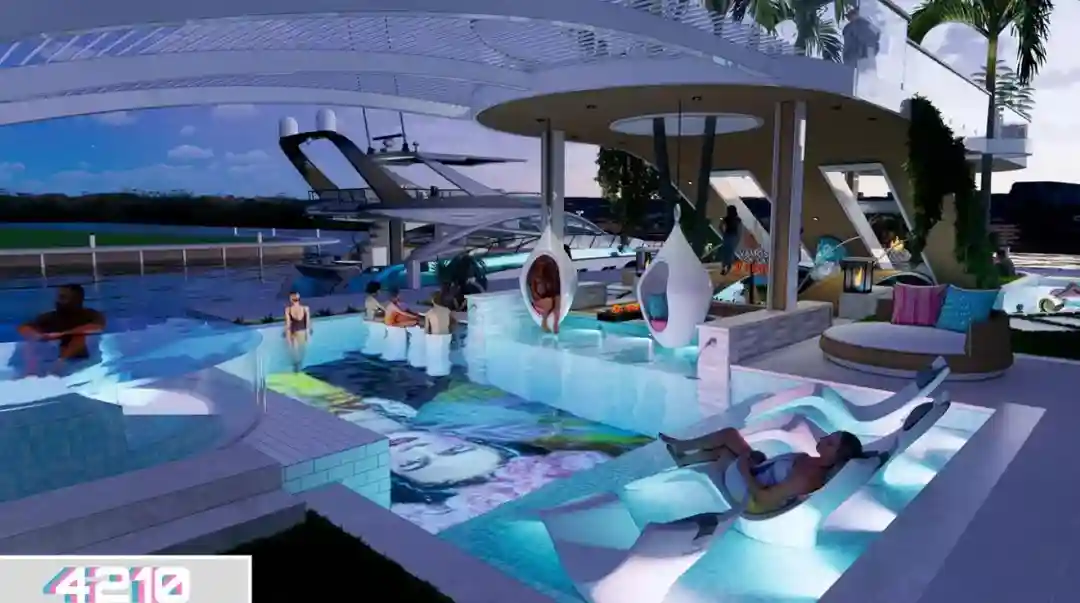Halmstad, Sweden
For his master’s thesis, Mathias Kidron used SketchUp to design an innovative timber-constructed space inspired by antique architecture in the hopes of creating a more connected future. Today, he builds on his skills as a professional architect.
Mathias started studying architecture at the Chalmers University of Technology in 2015 after years of architectural aspiration and a love for drawing. It was at university that Mathias started using digital tools, including SketchUp, to design 3D spaces.
My professors recommended several programs; depending on which year you studied, it was a bit different. But for the most part, you only really need SketchUp.
—Mathias Kidron
When it came time for his thesis, Mathias used SketchUp to design an ambitious project — a culmination of everything he’d learned at school, and groundwork for what he hoped for his future architectural career. His goal was to make an innovative, sustainable timber structure that would help create cohesion in his community by providing a welcoming meeting space.
Portrait of Mathias Kidron, architect.
A thesis to connect historical concepts with future hope
Mathias was given free rein to create his thesis. He could situate his structures in imaginary worlds and test experimental designs. However, Mathias decided to pursue a more grounded project: a public space situated in an open space in the heart of Gothenburg. He wanted to create a public building that provided space for debate and discussions.
Cover sheet for Mathias’ thesis.
Designing spaces for connection
Mathias looked to the past for ways of coming together for discussion, inspired by the past to alleviate the disconnect he sees in modern communication and debate. He believes that when people have disagreements on the internet, the anonymity can lead to dehumanization on both sides. When people discuss contentious topics in person, they tend to give their discussion partner the benefit of the doubt because it’s much easier to communicate the unspoken — like body language and intentions — in person. It’s easier to see a real person with feelings that can get hurt when you’re standing in front of them versus when you’re interacting with an avatar or screen name online.
Mathias believes that architecture has a unique role to play in creating better connections between people. Creating a welcoming physical space for people to come together encourages more civil discussions and a more cohesive community.
Rendering of the entrance of Mathias’ agora.
Inspiration from classical architecture
Mathias took both conceptual and aesthetic cues from the Roman Forum and the tradition of Greek agoras. In antiquity, these spaces were designed for people to come together for all aspects of civic life — commerce, art, justice, politics, spirituality, and public debate. In modern society, most of these aspects of civic life have found new architectural homes — commerce happens in malls, spiritual practice in temples, et cetera. Debate and discussion lack the same institutional support, so the internet has taken up the mantle virtually.
While Mathias’ project did not aim to be the all-encompassing center of civic life that the Forum and Greek agoras were, he believed that creating a space dedicated to community discussion would help usher in a new era of productive civil discourse.
Mathias studied both architecture and the societal effects the architecture had in ancient Rome and Greece and attempted to recreate an environment that would encourage the principles of free speech and expression through open spaces and permeable boundaries between structures. The soaring roofs promote a feeling of open space and possibilities.
Rendering of an atrium in Mathias’ agora. Scroll to see renderings of an auditorium.
The modern age of timber construction
Wood was a natural choice of material for Mathias; it’s very common in Sweden. Also, like many young architects, he sees the importance of pursuing sustainable design in architecture. Timber has become an increasingly popular material choice for sustainable construction, especially as the technologies around leveraging timber have improved.
Large-scale mass timber buildings present a unique challenge for architects and builders. Replacing steel and concrete with timber requires careful consideration. For his project, Mathias connected with a timber researcher at his university to determine how a large building could work with all-timber framing. Inspired by ancient architects and modern Japanese architect Kengo Kuma, Mathias opted to keep much of the timber construction visible in his project.
A series of images showing the agora’s timber construction. Scroll to see how the design builds on the timber frame.
Building a toolset for an ambitious thesis project
Mathias conducts in-depth research before beginning any project. While researching and reading, he would start with some hand sketching to give form to the ideas he was gathering. Very soon after his initial sketching phase, he moved into SketchUp to try different proportions and designs.
“As an architect, SketchUp is an incredibly valuable tool for fast and efficient modeling during the early stages of a project. The program's sketching capabilities are highly effective and allow for easy visualization of design concepts.”
—Mathias Kidron
Mathias leveraged SketchUp’s geolocation capabilities to help place his project in the correct context: an open space in a park in central Gothenburg near a theater and commercial district, creating a place for discussion and debate near other civic activities.
Site map showing Mathias’ project in context; scroll to see a rendering of the site map.
After a lifetime of hand-drawing before architecture school — Mathias loves how easy it is to draw in SketchUp.
“Its intuitive interface and similarity to using a pen make it a favorite. I really appreciate the push-pull feature for its simplicity and effectiveness for quickly turning a sketch into a 3D design.”
—Mathias Kidron
When his design was further along, Mathias used Twinmotion and V-Ray to create stunning visualizations that clearly communicated his design ideas.
Renderings of the exterior of the agora, located in a municipal park in Gothenburg’s city center. Scroll to see more.
Building skills as a professional architect
After graduation, Mathias began his career at a firm in Gothenburg. There, he worked on competition deliverables. With early phase design work and sketches being a big part of his workflow there, his professional work grew naturally out of his work as a student. After two years working in Gothenburg, he moved to Halmstad, Sweden, to begin working at Fredblad Arkitekter. There, he still works on competition deliverables and the early stages of projects, but also on projects that have been won and are further along in the design process.
As Mathias’ professional career has grown, so has his SketchUp skillset. He advocates for the importance of grouping work frequently, using components intelligently, and exploring all available functions to avoid unnecessary work. He’s also become more adept at integrating plugins and extensions as part of his workflow. His favorites include Joint Push/Pull, Curviloft, and Eneroth extensions. Watch the video below for tips on how to find the right extensions for your workflow.
Check out this video for advice on finding your next favorite extension.
Mathias stays at the forefront of design technology and experiments with AI. He’s been experimenting with SketchUp’s AI technology, Diffusion, which creates images that are rendered in seconds. With SketchUp, he’s able to communicate visual ideas with clients in a variety of ways, from static presentations to real-time 3D model tours.
Tips for early-career architects
Throughout his journey from student to professional architect, Mathias has made the most of the tools and information available to him. We asked him to pass on some wisdom for a new generation of architects navigating their early careers.
Explore as much as you can. Absorb all the information and knowledge you can get.
Iterate often. Be prepared to rework your design.
Be decisive. Make decisions quickly and move on with your design.
Listen to your critiques. Reflect and use them to develop.
Read a lot of history. There is so much to be learned from the past that can be translated into modern architecture and urban design.
Do your own thing.
—Mathias Kidron
Feeling inspired to create a stunning design of your own? Start with a free trial of SketchUp, or check out our subscription options if you’re ready to start building a professional portfolio.
